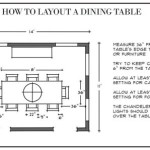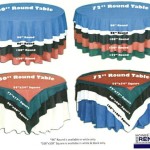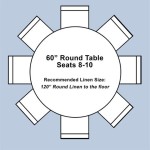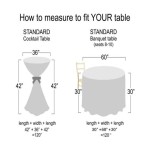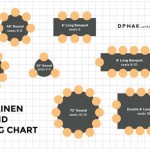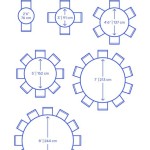What Size Rug for a Round Dining Table: A Comprehensive Guide
Selecting the correct rug size for a round dining table is a crucial aspect of interior design, impacting both aesthetics and functionality. A rug that is too small can make the dining area feel cramped and disjointed, while a rug that is too large can overwhelm the space and detract from the table itself. This guide aims to provide a detailed understanding of the factors to consider when determining the ideal rug size for a round dining table, ensuring a harmonious and well-proportioned dining space.
The primary function of a rug beneath a dining table is to visually anchor the space and provide comfort underfoot. It helps to define the dining area, separating it from the rest of the room, particularly in open-concept layouts. A well-chosen rug also protects the flooring from scratches and daily wear and tear caused by chairs being moved in and out. Furthermore, it can significantly enhance the overall aesthetic appeal of the dining room, adding warmth, texture, and visual interest.
Before delving into specific measurements, it is essential to understand the fundamental principles that govern rug selection for round dining tables. The key is to ensure that the rug extends far enough beyond the table so that the chairs remain on the rug even when they are pulled out for seating. This prevents the discomfort of chairs snagging on the rug's edge and protects the flooring underneath.
Key Point 1: The Overhang Rule
The overarching principle governing rug selection for round dining tables is the "overhang rule." This rule dictates that the rug should extend at least 24 to 36 inches beyond the edge of the table in all directions. This measurement accounts for the space required to comfortably pull out a chair and sit without the back legs falling off the rug. This measurement varies based on the chair size and the amount of space one wants.
The 24-36 inch overhang can vary depending on the scale and style of the dining room. In smaller dining areas, a 24-inch overhang may suffice, while larger, more formal dining rooms may benefit from a 36-inch overhang to create a more luxurious and spacious feel. Consider the overall proportions of the room and the size of the dining table when determining the appropriate overhang.
To calculate the ideal rug size, measure the diameter of the round dining table. Then, add the desired overhang (24 to 36 inches) to each side of the diameter. For example, if the table has a diameter of 48 inches (4 feet), and you desire a 24-inch overhang, add 48 inches to the diameter (24 inches on each side). This results in a recommended rug diameter of 96 inches (8 feet). Similarly, a 36-inch overhang would necessitate a rug with a diameter of 120 inches (10 feet).
It is important to note that rugs are often sold in standard sizes. If the calculated rug size falls between standard sizes, it is generally advisable to opt for the larger size. A slightly larger rug is preferable to one that is too small, as it ensures adequate coverage and prevents the chairs from becoming unstable.
Consider the material of the rug when determining the overhang. Thicker rugs, such as shag rugs, may require a slightly larger overhang to accommodate the increased pile height. This ensures that the chairs glide smoothly over the rug's surface without getting caught or impeded. Thinner, flat-weave rugs, on the other hand, may require less overhang.
Key Point 2: Room Size and Shape
The size and shape of the dining room play a significant role in determining the appropriate rug size. In a square or rectangular dining room, a round rug can create a visually appealing contrast and soften the overall geometry of the space. However, it is crucial to ensure that the rug is properly centered under the table and that it does not extend too close to the walls. Generally, a distance of at least 18 inches between the rug's edge and the wall is recommended to avoid a cramped or cluttered feel.
In smaller dining rooms, it is often necessary to prioritize functionality over aesthetics. A smaller rug that adequately accommodates the chairs may be preferable to a larger rug that overwhelms the space. In these cases, consider using a rug with a lighter color palette and a simple pattern to create a sense of openness and airiness.
In larger dining rooms, a larger rug can be a statement piece that anchors the entire space. However, it is important to ensure that the rug is proportionate to the size of the table and the overall dimensions of the room. Avoid using a rug that is so large that it extends excessively close to the walls, as this can make the room feel smaller and less inviting.
The shape of the dining room can also influence the choice of rug size and shape. In irregularly shaped dining rooms, a round rug may not be the most suitable option. In these cases, consider using a square or rectangular rug that complements the room's unique geometry. Alternatively, custom-sized rugs can be created to perfectly fit the specific dimensions of the dining area.
Consider the presence of other furniture in the dining room, such as sideboards or buffets, when determining the rug size. Ensure that the rug does not interfere with the placement or functionality of these pieces. The rug should ideally extend slightly beyond the front legs of these furniture pieces, creating a cohesive and integrated look.
Key Point 3: Style and Material Considerations
The style and material of the rug should complement the overall design aesthetic of the dining room. A formal dining room may benefit from a traditional rug with intricate patterns and luxurious materials such as wool or silk. A more casual dining room may be better suited to a contemporary rug with geometric patterns and durable materials such as jute or sisal.
Consider the color palette of the dining room when selecting a rug. A rug with a complementary color scheme can tie the entire room together and create a harmonious and visually appealing space. Alternatively, a rug with a contrasting color can add a pop of visual interest and create a focal point in the dining room.
The material of the rug should be chosen based on its durability, comfort, and ease of maintenance. Wool rugs are a popular choice for dining rooms due to their durability, stain resistance, and luxurious feel. Synthetic rugs, such as those made from nylon or polyester, are a more affordable option that is also easy to clean and maintain. Jute and sisal rugs are a natural and eco-friendly option that adds texture and visual interest to the dining room.
The pile height of the rug should also be considered. Low-pile rugs are generally easier to clean and maintain, making them a practical choice for dining rooms where spills and messes are common. High-pile rugs, such as shag rugs, offer a more luxurious and comfortable feel but may require more frequent cleaning.
Consider the level of foot traffic in the dining room when selecting a rug material. High-traffic areas may require a more durable and stain-resistant rug, while less frequently used dining rooms can accommodate more delicate materials. Ultimately, choosing the right rug requires a careful balance between aesthetic appeal, functionality, and practicality.
In conclusion, selecting the correct rug size for a round dining table involves careful consideration of multiple factors, including the overhang rule, the size and shape of the room, and the style and material of the rug. By following these guidelines, individuals can ensure a harmonious and well-proportioned dining space that is both visually appealing and functionally sound. Careful planning and attention to detail will result in a dining room that is both comfortable and stylish, enhancing the overall enjoyment of the space.

Rules Of Thumb For Rugs Under Round Dining Tables Inspiration

Rules Of Thumb For Rugs Under Round Dining Tables Inspiration

Rules Of Thumb For Rugs Under Round Dining Tables Inspiration

6 Rules For Choosing A Dining Room Rug Pretty Souces Stonegable

Rules Of Thumb For Rugs Under Round Dining Tables Inspiration

Round Rug Size Guide For 36 42 48 54 60 72 Inch Tables Rugs Direct

Expert Advice How To Design A Perfectly Scaled Dining Room Rug Size Layout Carpet

Round Rug Size Guide For 36 42 48 54 60 72 Inch Tables Rugs Direct

Best Dining Room Rugs 2024

What Size Rug Under Dining Table Here S The Best Way To Find Righ
Related Posts


